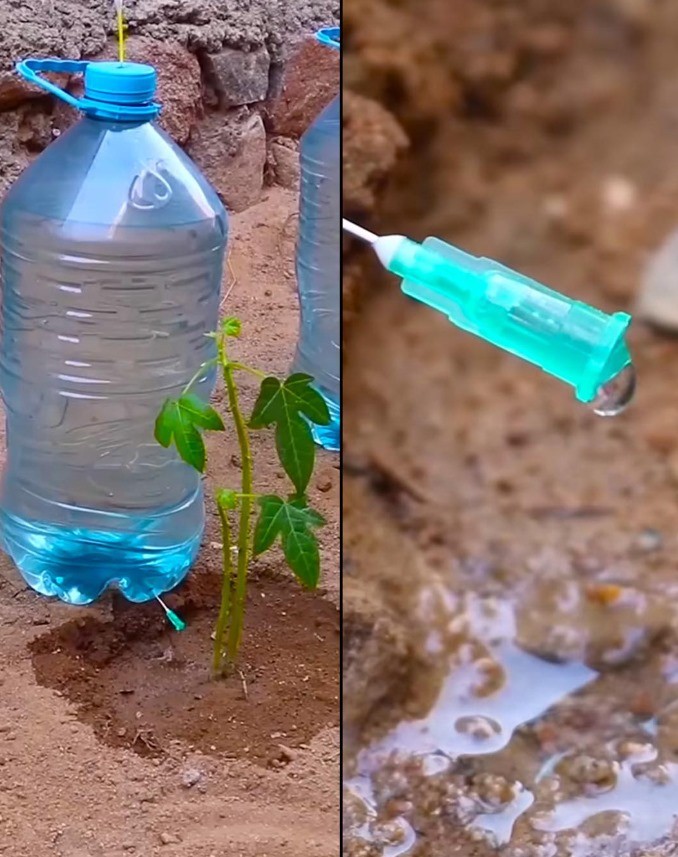ADVERTISEMENT
, a plastic tubing system might be a better option. This method allows you to direct water directly to the plant’s roots, which is ideal for plants that require more precision or larger amounts of water.
For Complete Cooking STEPS Please Head On Over To Next Page Or Open button (>) and don’t forget to SHARE with your Facebook friends
Instructions:
- Fill your plastic bottle with water as before.
- Using a drill or needle, create small holes in the lid of the bottle. This will allow the water to trickle out slowly, so be sure to make the holes small enough to prevent water from spilling too quickly.
- Attach the plastic tubing to the cap of the bottle. You can use a rubber band or some tape to secure the tubing tightly around the opening.
- Run the other end of the tubing directly to the soil in your plant pot, ensuring that it’s positioned close to the roots where the water is needed most.
- When the bottle is upside down, water will flow through the tube, keeping your plant hydrated for several days.
Pro Tip: You can adjust the size of the holes in the lid to control how much water is dispensed. For plants that need a lot of water, make the holes slightly larger. For those that prefer a more dry environment, use fewer or smaller holes.
3. The Self-Watering Pot
For a more permanent solution, you can repurpose an old container to create a self-watering pot. This method is especially effective for medium to large plants and can be used with a variety of materials you likely have at home.
Instructions:
- Take two plastic containers, one slightly smaller than the other (the smaller container will sit inside the larger one).
- Cut a few holes in the bottom of the smaller container to allow water to travel upward.
- Fill the larger container with water, then place the smaller container inside it.
- Place the plant in the smaller container, ensuring that the bottom of the plant’s pot touches the water in the larger container.
- The water will slowly rise through the holes into the plant’s pot, ensuring it stays hydrated over time.
Pro Tip: You can also line the bottom of the smaller container with a layer of gravel to improve drainage and prevent the soil from becoming waterlogged.
Additional Tips for Success
- Test Your System: Before you leave for vacation, it’s important to test your watering system to make sure it works as expected. Fill the system, check for leaks, and make sure water is reaching the plant.
- Consider the Climate: If you’re going away during hot weather, you may want to ensure that your plants are receiving enough water by adding more capacity or adjusting the watering method.
- Watering Frequency: Some plants may only need a few days of water, while others need more frequent hydration. Be sure to adjust the size of your watering system based on how thirsty your plants are.
- Use Mulch: Mulching around your plants can help retain moisture and reduce the frequency of watering, making your DIY system even more effective.
Conclusion
A DIY automatic plant watering system is a great way to ensure that your plants stay hydrated and healthy when you’re away. Whether you choose a simple wick system, a more controlled tubing system, or a self-watering pot, these systems can be customized to fit the needs of your plants. Best of all, they’re easy to make, cost-effective, and will give you peace of mind while you enjoy your vacation. So go ahead, build your system, and let your plants thrive – no matter where you are!
